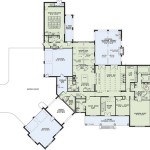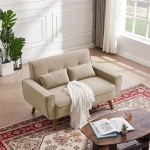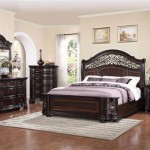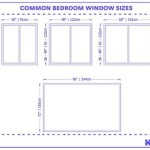The Best Gray for a Bedroom: A Comprehensive Guide
Gray has cemented its position as a versatile and sophisticated color choice for interior design, particularly in bedrooms. Its neutrality allows it to seamlessly integrate with a wide range of styles, from minimalist and modern to traditional and romantic. However, the sheer variety of gray shades available can make selecting the perfect hue for a bedroom a daunting task. This article provides a detailed exploration of the best grays for bedrooms, covering key factors to consider and offering specific recommendations to achieve different desired aesthetics.
Understanding the Undertones of Gray
Gray is not simply a blend of black and white. The addition of other pigments to the base mix creates undertones that significantly impact how the color appears in a room. These undertones are crucial to understand, as they influence how the gray interacts with natural and artificial light, as well as with other colors present in the space.
Cool grays typically possess blue, green, or violet undertones. These shades tend to create a calming and serene atmosphere, making them well-suited for bedrooms designed for relaxation and tranquility. Cool grays often pair well with other cool colors, such as blues, greens, and purples, as well as with crisp whites and metallic accents.
Warm grays, on the other hand, have yellow, brown, or even red undertones. These grays evoke a sense of warmth, comfort, and coziness. They are particularly effective in bedrooms that receive limited natural light, as they help to counteract the coolness and create a more inviting ambiance. Warm grays complement earthy tones, such as browns, oranges, and reds, as well as creamy whites and natural wood finishes.
Neutral grays are those that lack any discernible undertones. They are the truest form of gray, sitting perfectly balanced between warm and cool. Neutral grays are highly versatile and can be paired with virtually any color palette. However, it is important to note that neutral grays can sometimes appear flat or lifeless if not used strategically. They require careful consideration of lighting and the addition of textures and other colors to prevent the room from feeling sterile.
Factors Influencing Gray Selection
Choosing the best gray for a bedroom involves considering several factors that directly impact the overall aesthetic and atmosphere of the space. These factors include the room's size, existing light conditions, desired mood, and personal style preferences.
The size of the bedroom plays a significant role in determining the most appropriate gray shade. In smaller bedrooms, lighter grays are generally preferred, as they help to create a sense of spaciousness and airiness. Darker grays, while sophisticated, can make a small room feel even more cramped and enclosed. Conversely, in larger bedrooms, darker grays can be used effectively to create a more intimate and cozy atmosphere. However, it is crucial to balance the use of dark grays with sufficient lighting to prevent the room from feeling gloomy or oppressive.
The amount of natural light a bedroom receives is another critical consideration. North-facing rooms typically receive cooler, indirect light, which can accentuate the blue undertones in cool grays. In such rooms, it may be beneficial to opt for a slightly warmer gray to counteract the coolness and prevent the room from feeling cold or sterile. South-facing rooms, on the other hand, receive warm, direct sunlight, which can soften the appearance of cool grays and enhance the warmth of warm grays. East-facing rooms receive warm morning light and cooler afternoon light, while west-facing rooms receive cooler morning light and warm afternoon light. The specific orientation of the room should be considered when selecting a gray shade to ensure that the color appears balanced and harmonious throughout the day.
The desired mood or ambiance of the bedroom is another important factor. For a serene and relaxing retreat, cool grays with blue or green undertones are ideal. These shades evoke a sense of tranquility and calmness, promoting restful sleep. For a cozy and inviting space, warm grays with yellow or brown undertones are a better choice. These shades create a feeling of warmth and comfort, making the bedroom feel like a haven. Neutral grays can be used to create a sophisticated and minimalist aesthetic, but careful attention should be paid to the overall design to prevent the room from feeling sterile or impersonal.
Ultimately, personal style preferences should guide the selection of the best gray for a bedroom. Some individuals may prefer the clean and modern look of cool grays, while others may be drawn to the warmth and character of warm grays. It is essential to consider existing furniture, bedding, and décor when choosing a gray shade to ensure that the color complements the overall aesthetic of the room. Sampling different shades of gray and observing how they appear in the bedroom under different lighting conditions is highly recommended before making a final decision.
Specific Gray Recommendations for Bedrooms
Given the expansive range of gray paint colors available, narrowing down the options can be challenging. The following recommendations provide a starting point for selecting the best gray for a bedroom, categorized by undertone and desired aesthetic.
For cool gray options, "Benjamin Moore Stonington Gray" is a popular choice. This light and airy gray has subtle blue undertones, creating a calming and serene atmosphere. It pairs well with crisp whites, cool blues, and silver accents. “Sherwin-Williams Repose Gray” is another excellent option. While often labeled a warm gray, its subtle cool undertones make it incredibly versatile and effective in creating a restful space, especially when offset with warmer accents in bedding or decor.
In the realm of warm grays, "Sherwin-Williams Agreeable Gray" is a widely favored selection. This versatile gray features a slight beige undertone, providing warmth and comfort. It complements earthy tones, creamy whites, and natural wood finishes. "Benjamin Moore Revere Pewter" is another timeless warm gray option. This classic shade has subtle brown undertones, creating a cozy and inviting ambiance. It pairs well with warm whites, browns, and gold accents.
For neutral grays, "Benjamin Moore Classic Gray" is a reliable choice. This versatile gray lacks any discernible undertones, making it compatible with a wide range of color palettes. It serves as a blank canvas, allowing other colors and textures to take center stage. However, it is important to note that "Classic Gray" may require careful consideration of lighting and the addition of decorative elements to prevent the room from feeling bland. "Farrow & Ball Cornforth White" is another option. Despite its name, it presents as a sophisticated neutral gray with a subtle warmth that prevents it from feeling stark, providing a balanced backdrop for various design elements.
When selecting a specific gray shade, it is imperative to test samples on the bedroom walls before committing to a full paint job. Paint colors can appear significantly different in different lighting conditions, and it is essential to observe how the gray interacts with the room's natural and artificial light at various times of the day. Additionally, it is helpful to hold paint samples up against existing furniture, bedding, and décor to ensure that the color complements the overall aesthetic of the space. Larger samples, such as painted poster boards, provide a more accurate representation of the color than small paint chips.
The sheen of the paint also plays a role in the final appearance of the gray on the walls. Matte or flat sheens absorb more light, creating a softer and more muted look. These sheens are ideal for minimizing imperfections on the walls and creating a relaxing atmosphere. Eggshell or satin sheens have a slight sheen that reflects more light, making the color appear brighter and more vibrant. These sheens are more durable and easier to clean than matte sheens, making them suitable for high-traffic areas or walls that are prone to stains. Semi-gloss or gloss sheens are the most reflective and durable, but they are typically not recommended for bedroom walls, as they can be too bright and distracting.
In conclusion, selecting the best gray for a bedroom requires careful consideration of various factors, including undertones, room size, lighting conditions, and personal style preferences. By understanding the nuances of gray and taking the time to test samples and evaluate different sheen levels, individuals can create a bedroom that is both stylish and conducive to relaxation and restful sleep. The versatility of gray allows for endless possibilities, making it an ideal choice for creating a personalized and inviting sanctuary.

The Best Gray Paint Colors For Your Home

25 Of The Best Gray Paint Options For Primary Bedrooms

Grey Bedroom Ideas Tips To Use Colour In

The Best Grey Bedroom Decor Ideas

The 14 Best Light Blue Gray Paint Colors Of 2025

20 Best Gray Paint Colors According To Interior Designers

26 Best Bedroom Wall Colors Paint Ideas For Decoholic

The 9 Best Bedroom Colors For Good Sleep Ta Dubai

Guide To Glam Up Your Grey Themed Bedroom Decorpot

The 5 Best Paint Colors For Bedrooms Flooring Girl








